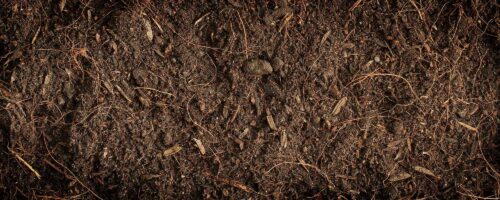Bullheads
Bullhead catfish provide many hours to enjoyment to anglers, especially beginning fishermen. However, they compete directly with channel catfish and sometimes cause water turbidity problems.
I am referring to catfishes, not stubborn people. Three species of bullhead catfishes occur in Oklahoma and Texas: black bullhead, yellow bullhead, and brown bullhead. Black and yellow bullheads occur throughout most of Oklahoma and Texas, while brown bullhead occurs only in the extreme eastern portions of both states. All three are native fish.
Brown and black bullheads have squared-off, slightly notched caudal (tail) fins and dusky to black chin barbels, while the yellow bullhead has a squared-off, slightly rounded caudal fin and yellow to white chin barbels. The brown and yellow bullheads have strongly barbed pectoral spines, while the black bullhead has weakly barbed, almost smooth pectoral spines. The black bullhead has seventeen to twentyone rays in its anal fin; the yellow bullhead, twenty-three to twenty-seven; the brown bullhead, twenty to thirty.
Bullheads usually weigh less than 1 pound, but they occasionally grow larger. World records for black and yellow bullheads exceed 8 pounds. Bullheads are omnivores, eating many animal and plant foods. They often bite a baited fishhook when many other species will not cooperate.
Black bullhead seems to be the most common bullhead in ponds in our service area. I have never encountered brown bullhead in area ponds and only occasionally encountered yellow bullhead. When largemouth bass are scarce or absent in ponds, black bullhead frequently overpopulate, becoming stunted and causing ponds to become turbid (muddy). In my experience, black bullhead is the third most frequent cause of muddy water in area ponds; watershed erosion and livestock disturbance are more common causes.
Water quality strongly influences sport fish and aquatic plant production. Muddy water produces less fish and aquatic plants than water with better clarity. Muddy water can be cleared with chemicals such as alum or gypsum, but if the causes of muddy water are not addressed, water usually becomes muddy again soon after chemical treatment.
When bullheads are absent or not too abundant, they are not the cause of muddiness in ponds. The best ways to determine the presence and abundance of bullheads are to use baited funnel fish traps and hook and line fishing. Funnel openings in traps should be 1.5 to 2 inches wide, and mesh size should be 1/8 to 1/4 inch. You can use dough bait, bread products, or feed to bait funnel fish traps. Fish traps should be set in water 2 to 6 feet deep and checked daily. Set the traps at multiple locations until you catch several bullheads or determine they are uncommon or absent.
Hook and line fishing for bullheads should involve small hooks, such as sizes 6 to 8. Bait the hooks with live earthworms, insects, dough bait, stink bait, blood bait, or some other catfish bait. If you use hook and line fishing to survey bullheads, attempt it on multiple days until you catch several bullheads or feel confident that they are uncommon or not present.
Once the abundance and presence of bullheads have been determined, a pond manager should decide whether they conflict with the goals for a pond. The presence of bullheads is not necessarily bad. Where bullheads are undesirable, you have three options to remove them: (1) stock large bass, (2) drain the pond, or (3) rotenone the pond.
Largemouth bass averaging at least three times longer than the average bullhead length and stocked at 40 pounds per acre eventually remove bullheads. Stocked in this manner, a pond would have fewer bullheads each year. It might require eight to ten years to eliminate bullheads by using this technique, but this approach should substantially reduce bullhead impacts on water quality within three years. When stocked in this manner, bass can be fished but should not be harvested until bullhead control is complete. Ponds with abundant bullheads do not have harvestable surpluses of largemouth bass.
If you use draining to remove bullheads, leave the pond dry for six weeks because bullheads can survive in wet pond sediments for a while after surface water is removed. The best month to drain a pond is July. If water puddles remain in the pond after draining, they should be rotenoned.
Rotenone is a restricted use pesticide. In Oklahoma, you should get permission from the local state game warden before using rotenone for killing fish; in Texas, you don’t need state permission to use rotenone in private ponds. Rotenoning to remove bullheads involves measuring water volume and applying the appropriate amount of rotenone to obtain a concentration of at least 3 parts per million. Bullhead control requires more rotenone than that necessary to control most fish species. Liquid rotenone is preferable to the powdered form. Dilute rotenone with water before application. Apply it first to water deeper than 6 feet via siphon or pump, then to the surface over the deep water, and finally to the surface of the shallow water. Mix the pond water immediately after application by using a boat and outboard motor to facilitate thorough distribution of the rotenone, but minimize stirring additional sediment into the water. During summer, rotenone should detoxify within twenty-one days after application but may require more time during winter. If you use rotenone, please read and follow the instructions on the label.
Bullheads provide many hours of enjoyment to anglers, especially beginning fishermen. However, they compete directly with channel catfish and sometimes cause water turbidity problems. Thus, I usually do not recommend stocking them into ponds. Whether they are desirable or undesirable depends on the goals for the pond.


Comment